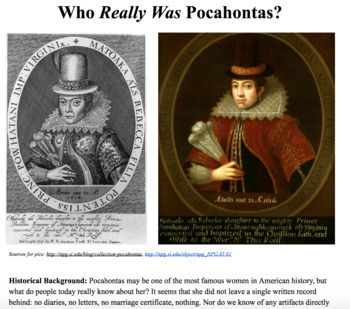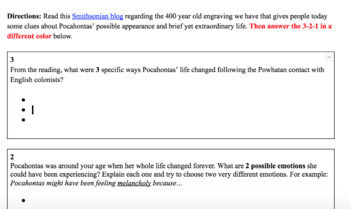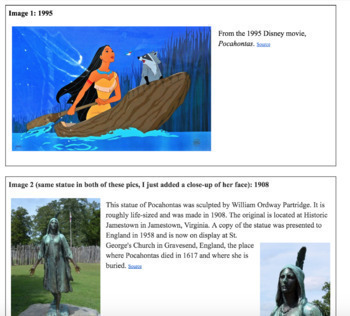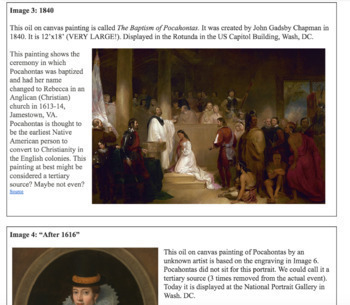Pocahontas: Who Americans Want Her to Be vs. Who She Really Was
- Google Docs™

Description
This non-fiction reading and writing activity was created with 7th graders in mind and is appropriate while studying Pocahontas/Powhatans/Jamestown Colony and John Smith, Eastern Woodlands Native American History/Virginia/Southern Colonies/13 Colonies/Early Relationships between Native American and Europeans/Womens' History. Students begin by viewing images (with sources) of Pocahontas they may recognize from throughout history. They discuss what they see and why the artist might have portrayed Pocahontas in a particular way. Then they read a brief linked article that examines some of Pocahontas' absolutely fascinating (and often tragic) experiences during her two brief decades of life. The point of this activity is to deepen students' knowledge of this important figure who has historically been portrayed in a one dimensional and stereotypical supporting role to European conquerers. Rather than traditional guiding questions, I have created "3-2-1" questions following the article which serve as a reading check.
If you are studying early American Colonies and Native American relationships, this lesson is a great complement to another lesson I have for sale: Squanto: International Man of Mystery! (Beyond the First Thanksgiving).





